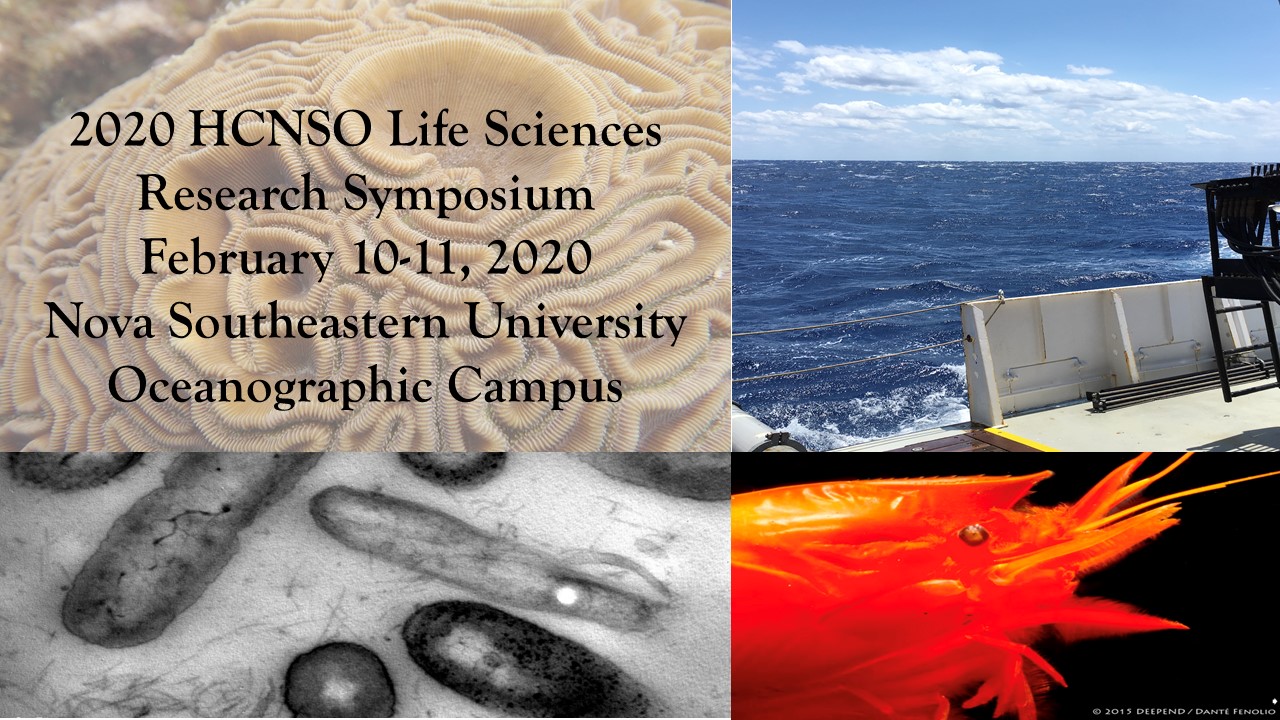Grow out of sexually produced juvenile corals in situ: Impact of space, light, and cleaning frequency
Location
HCNSO Guy Harvey Oceanographic Center Nova Southeastern University
Start
2-11-2020 2:45 PM
End
2-11-2020 3:00 PM
Type of Presentation
Oral Presentation
Abstract
To expedite recovery rates of coral reefs and increase species genetic diversity, restoration projects must include sexually produced corals. While methods to sexually reproduce corals, rear, and settle their larvae are relatively well established, the optimal and most cost-effective conditions to grow out coral juveniles remain poorly studied. Here we used a fully crossed experimental design to assess the effect of light exposure (facing upwards vs. downwards), space (large vs. small tiles), and cleaning (monthly/uncleaned) on the survival, growth, and condition of plating and mounding corals juveniles Agaricia agaricites and Porites astreoides in situ. We used 9 month old coral recruits previously raised from larvae onto settlement tiles ex situ. Agaricia agaricites (n = 93) and P. astreoides (n = 151) juveniles were deployed on to coral trees at 3 to 4 m depth in an established in situ nursery off of Ft. Lauderdale, FL, USA. Corals were monitored monthly with images taken to calculate their surface area using ImageJ. Biological interactions were documented in situ to determine how spatial competition of sessile organisms around the coral juveniles influenced their survival, growth, and condition. Both species had relatively high survival, with P. astreoides colonies quickly overgrowing their settlement tile. All coral juveniles in the low light treatment appeared darker and healthier than their counterparts. Light level, cleaning, and species had a substantial influence on the frequency of biological interactions. The low light and cleaning treatments for both species experienced the most biological interactions; however, A. agaricites had fewer overall biological interactions than P. astreoides. Space did not have a significant impact on the survival, growth, or condition of any of the coral juveniles. This study provides the first optimized methodology to rear sexually produced juvenile corals at in situ nurseries.
Grow out of sexually produced juvenile corals in situ: Impact of space, light, and cleaning frequency
HCNSO Guy Harvey Oceanographic Center Nova Southeastern University
To expedite recovery rates of coral reefs and increase species genetic diversity, restoration projects must include sexually produced corals. While methods to sexually reproduce corals, rear, and settle their larvae are relatively well established, the optimal and most cost-effective conditions to grow out coral juveniles remain poorly studied. Here we used a fully crossed experimental design to assess the effect of light exposure (facing upwards vs. downwards), space (large vs. small tiles), and cleaning (monthly/uncleaned) on the survival, growth, and condition of plating and mounding corals juveniles Agaricia agaricites and Porites astreoides in situ. We used 9 month old coral recruits previously raised from larvae onto settlement tiles ex situ. Agaricia agaricites (n = 93) and P. astreoides (n = 151) juveniles were deployed on to coral trees at 3 to 4 m depth in an established in situ nursery off of Ft. Lauderdale, FL, USA. Corals were monitored monthly with images taken to calculate their surface area using ImageJ. Biological interactions were documented in situ to determine how spatial competition of sessile organisms around the coral juveniles influenced their survival, growth, and condition. Both species had relatively high survival, with P. astreoides colonies quickly overgrowing their settlement tile. All coral juveniles in the low light treatment appeared darker and healthier than their counterparts. Light level, cleaning, and species had a substantial influence on the frequency of biological interactions. The low light and cleaning treatments for both species experienced the most biological interactions; however, A. agaricites had fewer overall biological interactions than P. astreoides. Space did not have a significant impact on the survival, growth, or condition of any of the coral juveniles. This study provides the first optimized methodology to rear sexually produced juvenile corals at in situ nurseries.


